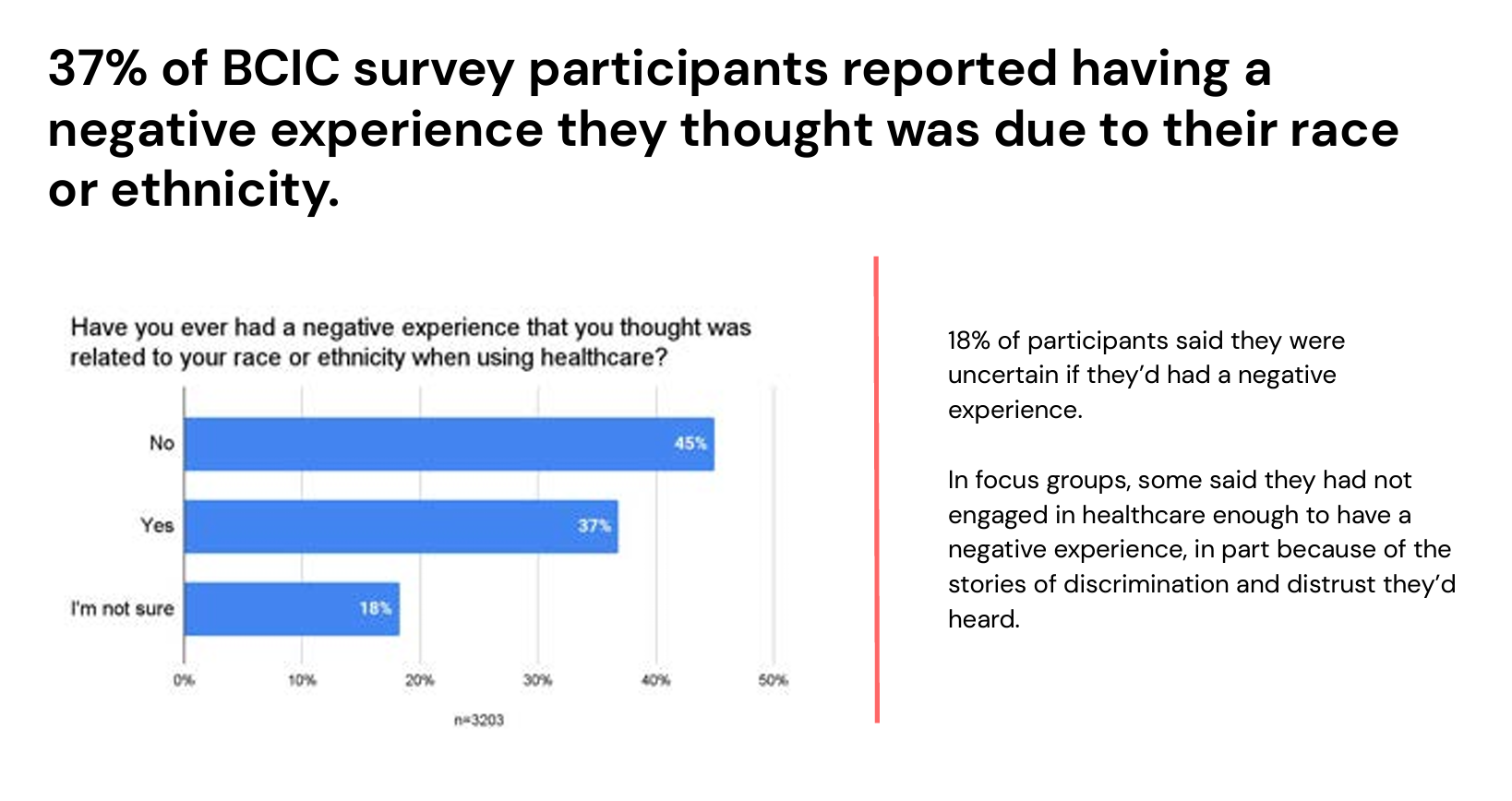Partnering with Seven Corporate Giants to Enhance Healthcare for Black Employees

In 2022 I helped lead Included Health’s Black Community Innovation Coalition, a six-month collaboration with seven employers to co-design a care concierge and navigation offering for Black employees. We ran 14 focus groups with 43 participants and a survey with 3,203 responses. The work surfaced persistent distrust in the system, frequent negative experiences tied to race, and the effort required to “armor up” just to get care.
Forty-seven percent sought culturally competent providers and better education, and we saw clear demand for trustworthy advocates. Findings and recommendations centered on trust building, a vetted provider list that reflects cultural, historical, and disease knowledge, and accessible educational resources.

Over the six-month engagement, I scoped the research frame with partners and clinicians, facilitated sessions, and drove synthesis into a clear executive story. I produced the final report and readout and aligned product, clinical, sales, and engineering on an action plan. I translated insights into product direction that included a vetted provider directory for Black members, a dedicated coordinator experience, and a library of plain-language education that supports self-advocacy.
I worked with product managers to define measures and with engineering to map data sources for adoption, provider search success, and care follow-through. I coordinated with employer partners on messaging so the program would launch with trust at the center.













The six-month coalition created the foundation for future product and clinical equity investments at Included Health. Insights that 37 percent of participants reported race-related negative care experiences, and that more than half delayed care as a result, directly influenced the focus on trustworthy advocates, vetted provider directories, and culturally competent education.
The work also established a repeatable model for partnering with large employers, ensuring both buy-in and real-world alignment. By centering on advocacy, provider matching, and self-advocacy resources, the project began to rebuild trust and reduce barriers to care.

